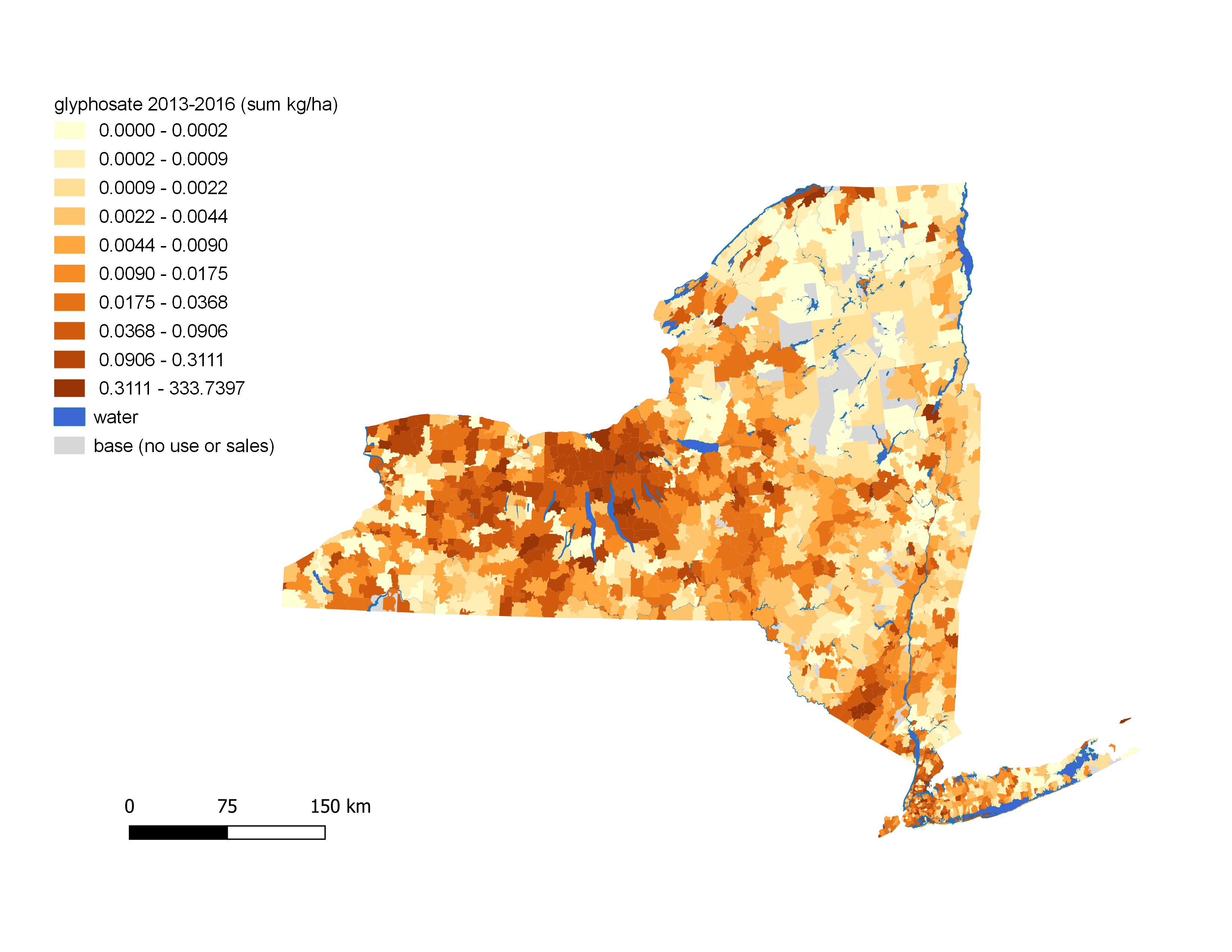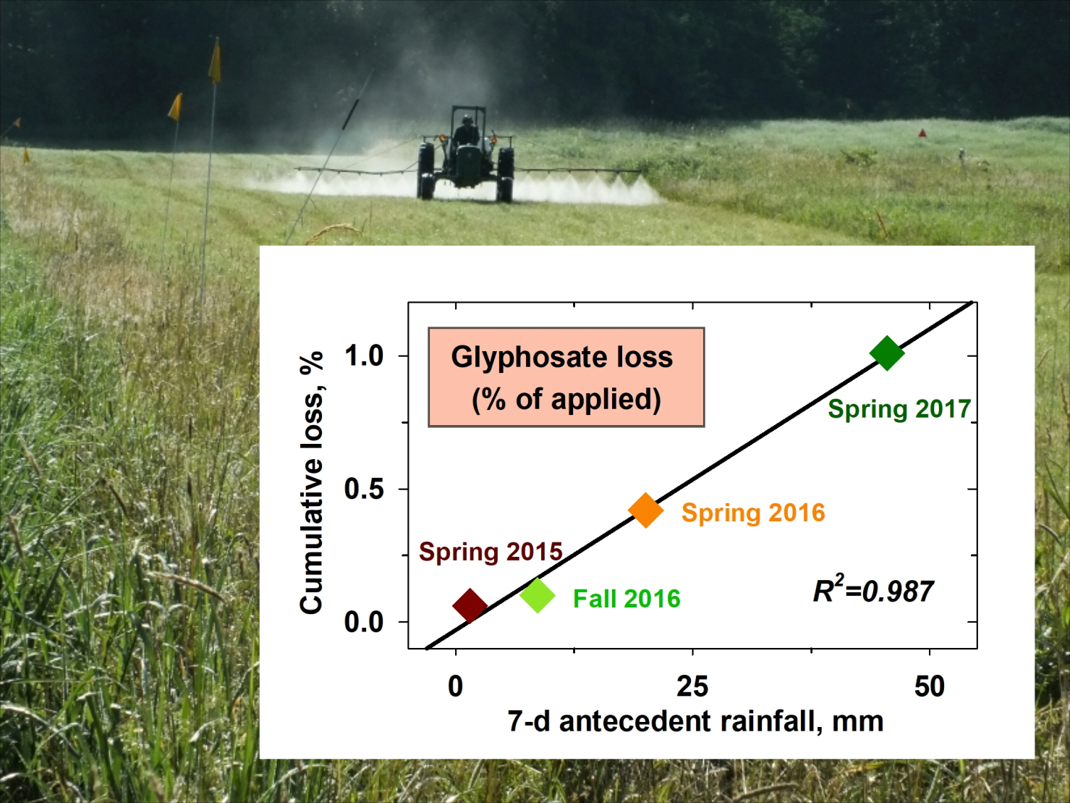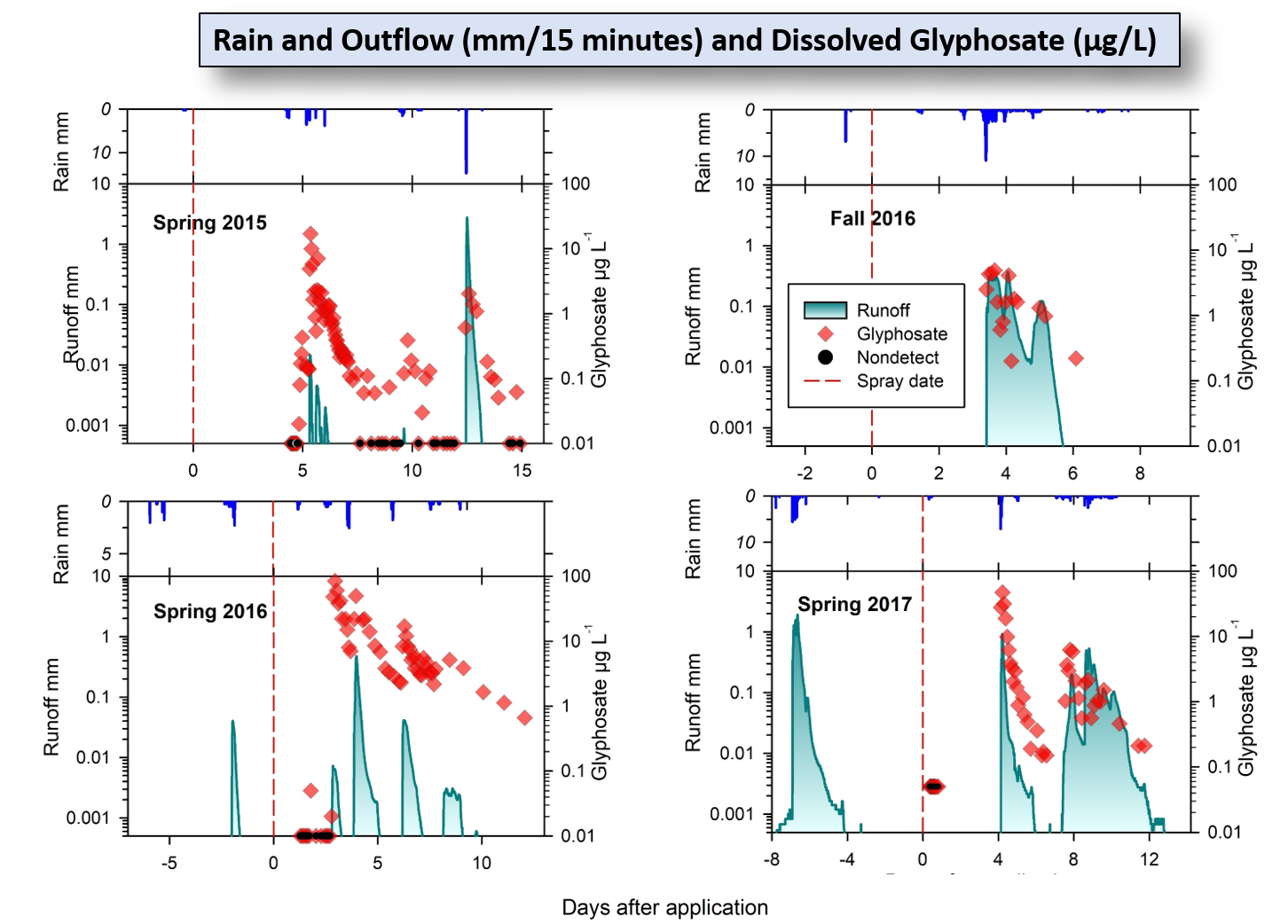Glyphosate Overview
Our glyphosate pages: Overview | Sites | Experiments | Methods | CRC Hydrology
Glyphosate has become tremendously popular in agriculture with the availability of genetically modified glyphosate-resistant crops, especially corn and soybeans. Cornell’s Ithaca campus is at the edge of the highest use area of New York:

As the usage of glyphosate containing products such as Monsanto’s Roundup™ has ramped up in the U.S., so has water monitoring which has revealed that an earlier assertion that glyphosate does not move from fields into watercourses is incorrect. We began to rehearse measurement of glyphosate escaping in stormwater from our biofuel grass fields in 2014, then began to quantify emissions in spring 2015. We began working with the USGS Water Resource Division’s Organic Geochemsitry Research Lab in 2015, eventually publishing a joint paper in Environmental Science and Technology Letters in 2018. Abstract:
Recent environmental surveys report widespread detections of the herbicide glyphosate [N-(phosphonomethyl)glycine] in surface waters, despite its strong immobilization and rapid biodegradation in soils. We carried out four sampling campaigns (during 2015 to 2017) following controlled spray applications on an experimental perennial grass field site with wetness-prone marginal soils. We monitored dissolved glyphosate concentrations in the outflow (runoff and shallow drainage) using liquid chromatography-mass spectrometry and enzyme-linked immunosorbent assays. Rainfall-triggered outflow events occurred between 3 and 13 days following spray application. Outflow concentrations varied widely from 0.01 µg L-1 up to 90 µg L-1, peaking during the first significant outflow event in each campaign and diminishing as flows subsided. Subsequent outflow peaks caused concentrations to again rise but to a lesser extent. Cumulative mass efflux in outflow ranged among campaigns from 0.06 to 1.0 percent of applied glyphosate. Cumulative glyphosate losses in outflow were not associated with total rainfall during the post-spray sampling period but rather with soil hydrologic conditions at the time of spraying as reflected by the 7-day cumulative pre-spray rainfall, with wetter antecedent conditions favoring greater cumulative mobilization. Avoiding spraying under such conditions may mitigate potential glyphosate mobilization.
Above abstract and graphs below from: BK Richards, S Pacenka, MT Meyer, JE Dietze, AL Schatz, K Teuffer, L Aristilde, and TS Steenhuis. 2018. Antecedent and Post-Application Rain Events Trigger Glyphosate Transport from Runoff-Prone Soils. Environmental Science & Technology Letters, 5(5):249-254. DOI
Two charts originating in the paper:

cumulative losses during storms soon after application

time pattern of concentrations in runoff (note log vertical scales for runoff and concentration)
In these web pages we document our experimental sites, the experiments we have conducted, and analytical methods we and USGS partners use.
While these pages document work through 2018, this work continued annually until 2023 (at least).
Work done in collaboration with the U.S. Geological Survey Organic Geochemistry Research Laboratory, Lawrence, Kansas. USGS has been testing all water media in the US for pesticides for decades, and synthesized a national glyphosate summary published in Water Resources Bulletin.
Our glyphosate environmental transport studies have been sponsored by the US Department of Agriculture NIFA, the Cornell Atkinson Center for a Sustainable Future, and NYSDEC.
Last updated 2023-09-21 sp17 AT Cornell.edu.